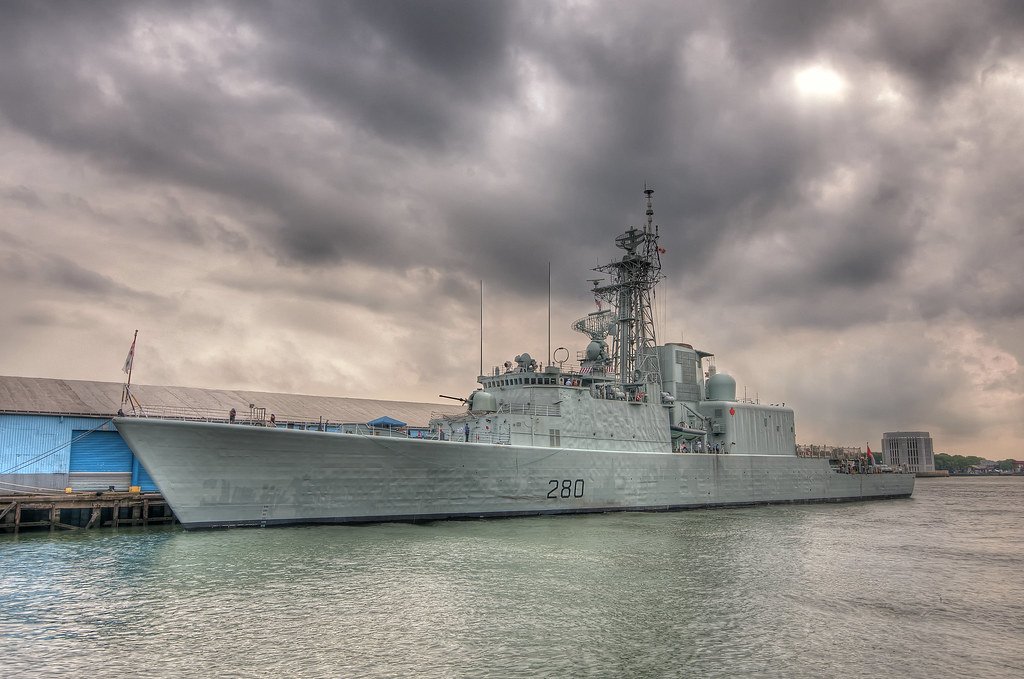The recent transit of U.S. and Canadian warships through the Taiwan Straits has once again cast the spotlight on the complex geopolitical dynamics of the region. The Chinese People’s Liberation Army (PLA) Eastern Theater Command has confirmed that they closely followed and monitored this transit, emphasizing China’s continued vigilance in protecting its national interests in the area.
Background on the Taiwan Straits: A Strategic Waterway
The Taiwan Straits, the waters separating Taiwan from the Chinese mainland, have historically been a region of strategic importance. Over the decades, the Straits have seen their fair share of international incidents, naval patrols, and political maneuverings. The passage of warships from various nations through the straits is not uncommon, but each transit is symbolic and often watched closely by geopolitical enthusiasts and nations with vested interests.
Recent Naval Transit: The USS Ralph Johnson and HMCS Ottawa
Senior Colonel Shi Yi, the spokesperson for the PLA Eastern Theater Command, mentioned in a statement that the U.S.’s guided-missile destroyer, the USS Ralph Johnson, along with the Canadian naval ship, HMCS Ottawa, were the latest vessels to make their way through these contested waters. This transit was not only followed closely by the Chinese forces but was also widely discussed by the international community.
The International Response and The ‘Hype’
Shi Yi highlighted that the U.S. and Canada had “hyped up” the passage of their warships through the straits. Such transits, while being routine naval operations for many countries, can be seen as loaded messages in international diplomacy. They can be perceived as shows of support for Taiwan, or simply as freedom of navigation exercises. But, when major powers involve themselves, the global community, as well as China, takes notice.
The question arises, why would the U.S. and Canada decide to ‘hype‘ up such an operation? Historically, nations have used such transits to make political points, reinforce alliances, or assert maritime rights. For the U.S. and Canada, emphasizing their naval presence in the Taiwan Straits might have several implications:
- Asserting Freedom of Navigation: Both the U.S. and Canada have been vocal supporters of the international principle of freedom of navigation. Highlighting their naval activities could be a way to emphasize this right in global waters, especially in areas where territorial claims are disputed.
- Signaling Support for Taiwan: The Taiwan issue has been a longstanding point of contention between China and many Western countries. By openly transiting the straits, the U.S. and Canada might be signaling their support for Taiwan’s sovereignty, even if they do not say it explicitly.
- Deterrence and Power Projection: By showcasing their naval capabilities, countries often aim to deter potential adversaries. The U.S., with its significant naval power, and Canada, a member of the NATO alliance, could be sending a subtle message about their combined strength and reach.
China’s Response: A Stance of Resilience and Vigilance
The PLA’s decision to monitor the warships is not surprising. The Eastern Theater Command’s primary responsibility is to safeguard China’s eastern seaboard, and the Taiwan Straits are a critical part of that mandate.
Shi Yi’s statement elucidates China’s stance on the matter. By mentioning that the theater command remains on “high alert,” China is reiterating its commitment to safeguard its national sovereignty and security. China has always viewed Taiwan as an integral part of its territory and any naval transit by foreign warships near its waters, especially near Taiwan, is seen with caution and often concern.
Furthermore, the added emphasis on “maintaining regional peace and stability” speaks to China’s broader objectives in the region. China has been a dominant power in East Asia for centuries and wishes to maintain a stable environment that is conducive to its economic growth and regional influence.
Conclusion
The Taiwan Straits, while just a narrow strip of water, encapsulate the larger complexities and dynamics of the Indo-Pacific region. The recent transit of U.S. and Canadian warships and China’s attentive response underscore the intricate balance of power and the continuous dance of diplomacy that nations partake in. While the waters may remain calm on the surface, beneath lie currents of geopolitical strategy and intent, ever-shifting and shaping the future of the region.
Read More:
